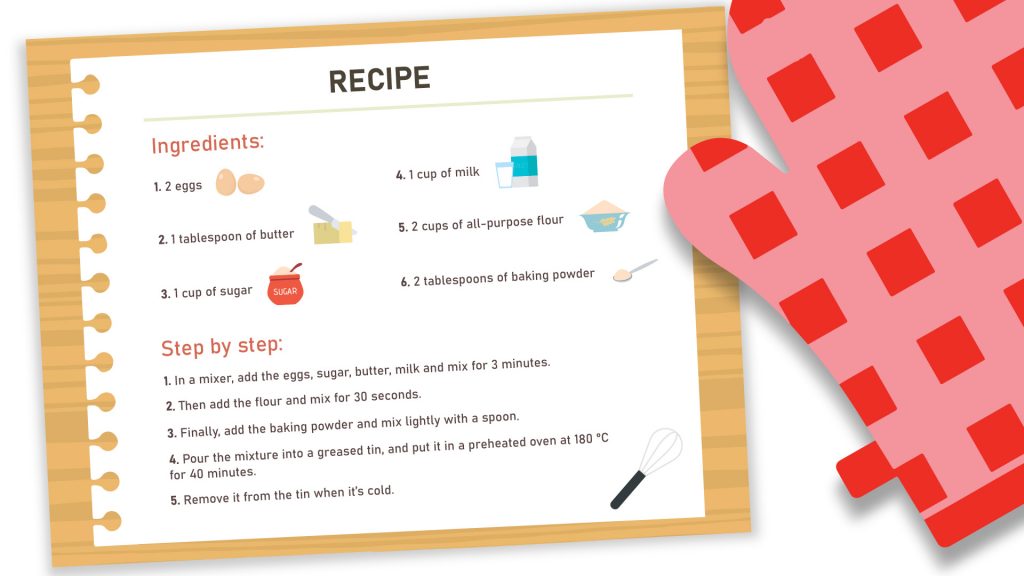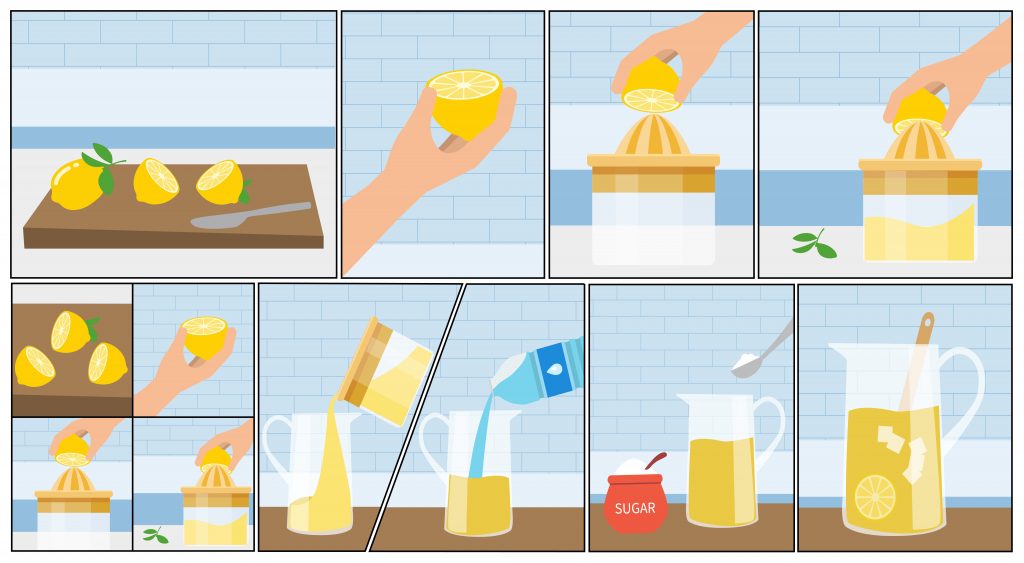Lesson 2
1. Who doesn’t like cake? Cake is great! And some cakes, besides being delicious, are very simple to make. But what does it take to make a cake? Ingredients, of course! And can we put the amount of ingredients we want, when we want, in the bowl? Maybe not… Maybe you need a recipe!

2. When looking at a recipe we see that it is divided into two parts.
• The first has the ingredients: a list of everything needed to make the cake. The second part has the required steps: a list of instructions that you need to follow to make the cake.
• In the second part of the recipe where we have the steps to follow, the instructions follow a certain order and it’s important that we do them in that order.
Think about it: Does it make sense to put the cake in the oven and only then mix the flour, sugar and eggs? Hmm… Not really.

Another element is the length of the instructions. These are usually short and very direct phrases. If they were veeeeery long and full of adjectives, we’d run the risk of getting lost in the middle of so much information.
Instructions always have a duration: a beginning and an end. Imagine if they didn’t have a duration: we would mix the cake dough forever! The cake would stay in the oven forever! So that doesn’t happen, the recipe indicates the specific time for each step.

3. The recipe we saw is a great example of what an algorithm is: a list of instructions that allows us to solve a problem, in this case, making a cake.
ADDITIONAL INFORMATION FOR TEACHERS
Now, let’s create an algorithm to make lemonade! We already have the ingredients and tools. The Lemonade Recipe form is handed out to students so they can try solving the exercise independently. Of course, we can always help.

4. Based on what you’ve already learned, you’ll create an algorithm to make lemonade! We’ll give you the ingredients and the tools.

Now, it’s your turn! Write your recipe.
ADDITIONAL INFORMATION FOR TEACHERS
Ten minutes before the lesson ends, using a black/white board, revise the algorithm together. It’s important that students are encouraged to share their solution.

5. As you’ve noticed, there are countless ways to make lemonade. Some add sugar, others not so much. Some squeeze the lemons, others blend them and filter the juice afterwards. As you see, there isn’t a single solution to the problem, there are several ways to solve it. Then, we present a solution proposal.

PROPOSED SOLUTION FOR THE EXERCISE
Step 1: With a knife, cut each of the lemons in half.
Step 2: Take half of the lemon.
Step 3: Turn the side with the pulp downwards and place it on top of the squeezer.
Step 4: Squeeze the lemon until it runs out of juice.
Step 5: Repeat the process for the other three remaining halves.
Step 6: Pour the juice in the juicer into the jug.
Step 7: Add a liter of water to the jug.
Step 8: Add two tablespoons of sugar to the juice.
Step 9: Stir well with a spoon, until all the sugar is dissolved.
Would you add anything? What would you change? Why?

6. Now that you understand what an algorithm is, run to the kitchen to make your lemonade!
In the next lesson we’ll continue talking about food. No, we’ll continue talking about algorithms!